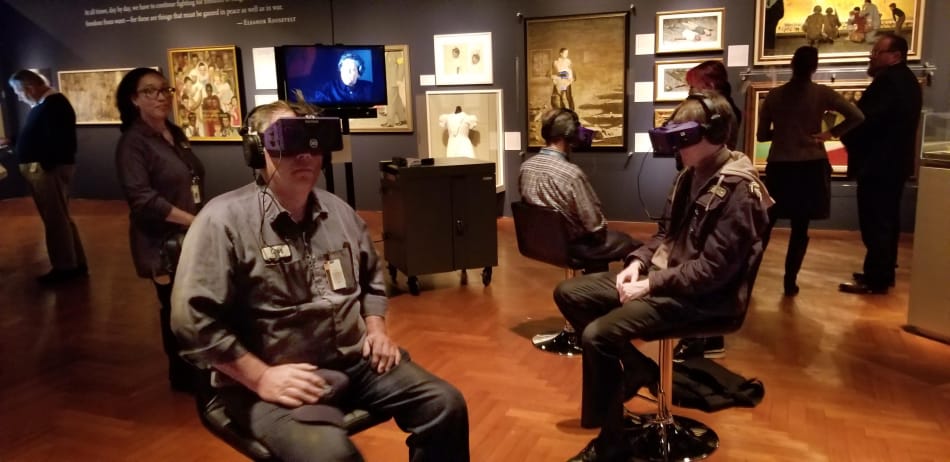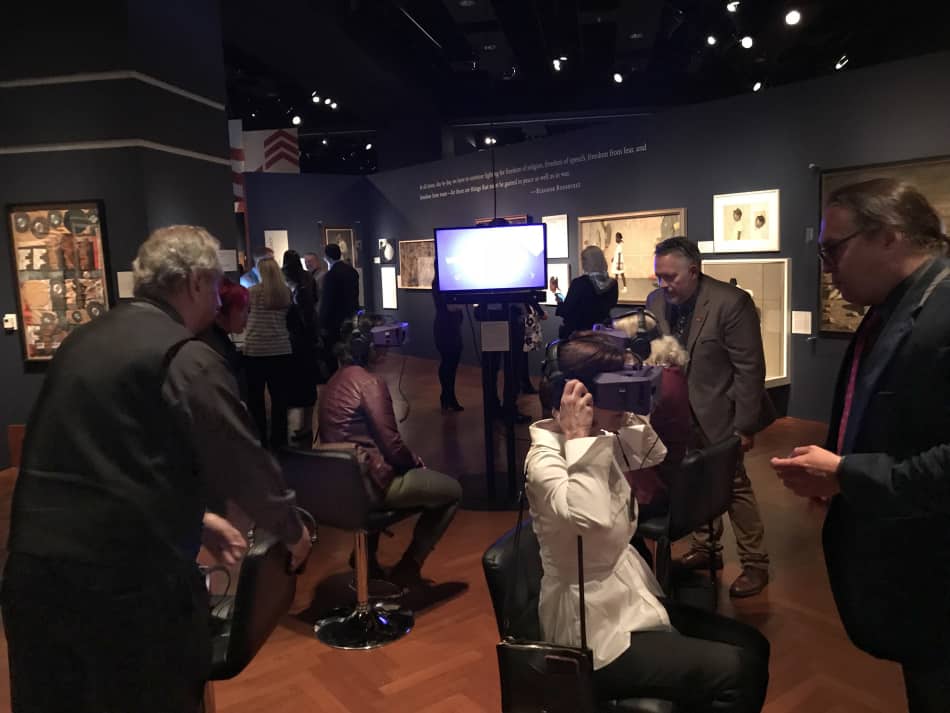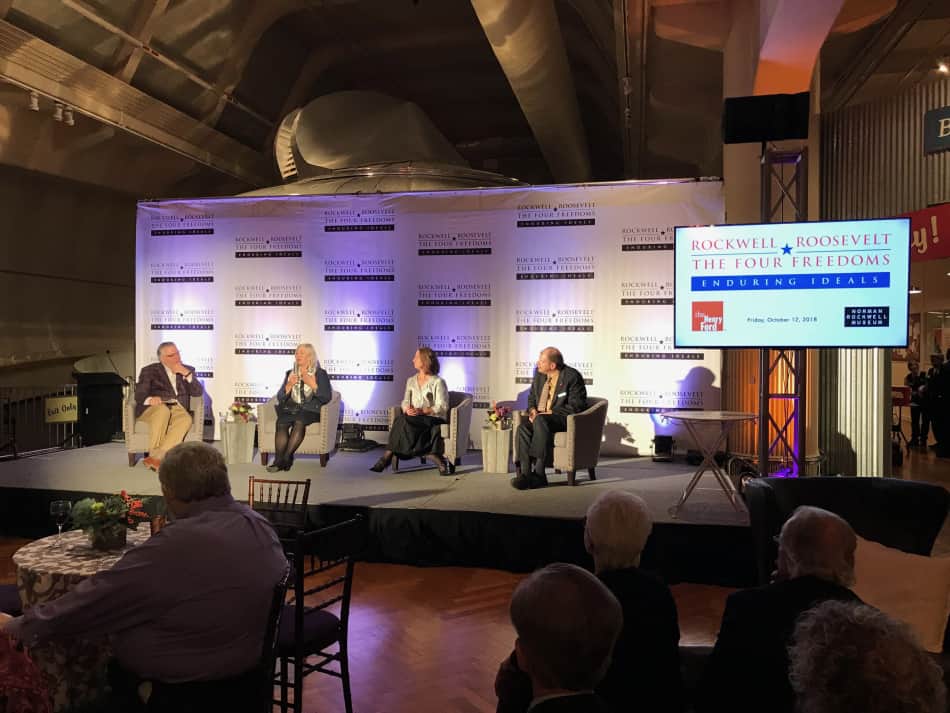From Spring 2017 to Spring 2018, Academy of Art University students from various departments collaborated to create an Oculus virtual reality experience for the Norman Rockwell Museum touring exhibit, “Enduring Ideals: Rockwell, Roosevelt and the Four Freedoms.”
Said exhibit—which opened at the New York Historical Society in May 2018, and touring until June 2019—features Rockwell’s iconic American imagery depicting the Four Freedoms: Freedom of Worship, Freedom of Speech, Freedom from Fear, and Freedom from Want. It is expected to land in Normandy on the 75th anniversary of D-Day on June 6, 2019.
These images, originally published in 1943 in the Saturday Evening Post, is heralded as having “shifted American attitudes towards engagement in the War in defense of the free world, and, ultimately helped to make the case for universal human rights,” saif Laurie Norton Moffatt, director for the Rockwell Museum.
Furthers Moffatt, it “reveals the enduring power of illustration to communicate ideas and inspire change. Moreover, in highlighting Rockwell’s and his generation’s response to the call for unity in support of these fundamental freedoms, the exhibition resonates powerfully with our own time.”

Closing the Gap
Successfully showcasing the work’s timeliness and enduring relevance despite being so far removed from the present is, however, another thing altogether. In developing a strategy for this exhibit, the contributing students had to think outside the box to bridge the generational gap.
One of the main considerations that the team had to address was the very broad age range of their target audience. The Oculus must, ideally, be able to connect with anyone aged between a young 5 and at young-at-heart 70.
Phil Kauffold, technical lead for the Academy’s School of Game Development (GAM) and project lead for the Rockwell exhibit, had a clear understanding of the challenges ahead. “We have to design for the young kid who knows the language of video games and understand this stuff. But also we have to design for somebody [who] is older [and] doesn’t have that intuitive understanding of what we think of as the normal visual language.”
It took the entire team—9 students on 3D modeling and texture; 8 students on interaction design and scripting; 2 UX/UI designers, 5 sound designers—a total of four semesters to complete the full build. Within this period, the development saw more students getting on board the project, countless of trial-and-errors, and numerous coding limitations. Playtesting, in particular, presented interesting challenges that threw them for a loop.

Stepping Up with Collaboration
In the final semester of the project, the team playtested the Oculus with senior citizens from the Institute of Aging. However, the participants didn’t know how to turn their heads while wearing the VR headset. “When it’s completely new, people don’t register what they’re seeing,” explained Kauffold. It’s not part of your experience, they had no point of reference for what exactly is going on.”
To resolve the user interaction issue, the project was turned over to School of Interaction & UI/UX Design (WNM) students. “This technology may be familiar to us, but for [seniors], it’s brand new and we have to accommodate that,” said M.F.A WNM student Margarita Tanchuling.
They settled on implementing visual prompts so that the users will have a guide instructing them what to do in the VR world to make the most of the experience.

Attesting to Teamwork
The spirit of collaborative learning is obviously shared among students from the other departments too. Abigail Lashbrook, the only School of Illustration student in the project, said that she “learned so much from the collaboration in general.” She expounds, “I learned the technical side of how you put a game together and how to collaborate amongst the different disciplines; also working with the museum, it’s learning how to work with a client.”
Meanwhile, WNM 2017 B.FA. graduate Cody Jackson had this to say about his experience:
“The game development people have a different skill set than the other web development people did which was equally necessary. It never felt like we weren’t using our skills to their full potential, it was just that we were using our skills in different ways.”
Indeed, the students who participated in the project could easily see this exhibit work as something that they would be proud to have in their game design portfolio, among others. As Zheng puts it, “This isn’t just a school project, this is a real-world project that is going to be out there and touring the globe. Imagine putting that on your résumé.”
The GAM students who worked on the project proudly showcased their work in May of last year at the Academy of Art University Spring Show 2018 before finally shipping it to the Norman Rockwell Museum on the East Coast.
From there, the touring exhibit made its way through Michigan and Washington D.C., and it’s headed to France, and Texas, before finally residing at the Rockwell Museum in Stockbridge, Massachusetts in Fall 2020.
On February 13, 2019, David Goodwine and Phil Kauffold will be presenting the VR project at the US Capital building to members of Congress. Art University